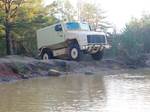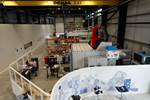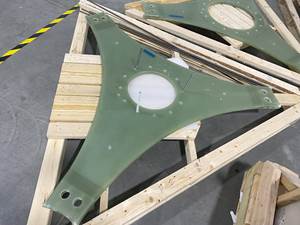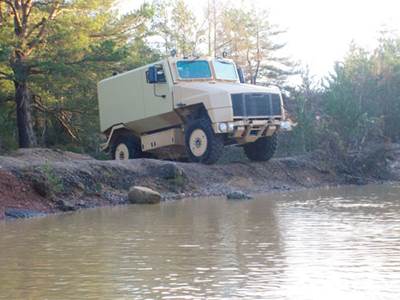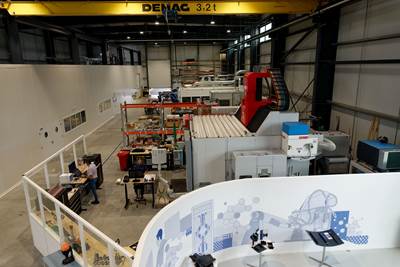Facing the military drawdown
HPC editor-in-chief Jeff Sloan comments on the impact that military drawdowns in the Middle East might have on the U.S. composites industry.
One of my job responsibilities is to gather composites industry news each week for publication in our ÂÌñÏ×ÆÞ Weekly e-newsletter. I use keyword searches on the Internet to stay on top of news and announcements and have a stable of about 30 keywords I use, including company names, such as Lockheed Martin, Northrop Grumman, Boeing, Airbus, Sikorsky, etc.
One thing I’ve learned, poring over search results, is that the wars in Iraq and Afghanistan have been very lucrative for military contractors. I see, almost every day, announcements of federal defense contracts, and a resulting increase in demand for composite parts and structures — unmanned aerial vehicles, aircraft and helicopter components, naval patrol boats, vehicle and personal armor, soldier housing and more. (A good example of the armor R&D can be found in this issue, where contributor Mike LeGault explores the latest antiballistic composites technologies for battlefield application — see "Editor's Picks," at right.)
Setting aside for the moment the arguments for and against our presence in these countries, the fact that we have been in Afghanistan since 2001 and Iraq since 2003 has created a vigorous and well-funded military economy that employs thousands of people and consumes millions of pounds of composite materials each year. It has spurred creativity and innovation in application of composite products that we might otherwise not have seen. Use of military hardware in combat has exposed many limitations, forcing the military community to think more seriously about composites as a means of lightweighting and corrosion-prevention in its warfighting structures and for protection of troops in harm’s way.
All of this has been wonderful for the composites community, but like it or not, such gravy trains don’t run forever. As I write this editorial in mid-August, the U.S. has announced the departure from Iraq of its last combat brigade. Only 50,000 troops remain to help keep the peace, train Iraqi solders and continue rebuilding the country. In Afghanistan, a U.S. troop drawdown could begin as soon as next summer. As these conflicts end their “hot” phases, demand for some composite parts and structures will wane as well. No surprise, then, that U.S. Department of Defense Secretary Robert Gates has proposed military spending cuts totalling $100 billion (USD) over the next five years. And that’s on top of the Pentagon’s decision in 2009 to cut the F-22 fighter jet program. Will other high-profile projects also get the ax? The bottom line is that money will not flow to defense projects like it once did, and there will be consequences.
It would be helpful if there were other emerging end markets to pick up the lost demand. Wind energy, for one, shows promise to consume large quantities of composite materials for many years, but it’s been hobbled severely by the recession and accompanying credit crunch. The auto industry, also laid low by the recession, is reorganizing itself to emphasize electric drivetrain technology that may attract several new uses of composites, but this looks to be a slow-evolving transition out of a very deep ditch.
We’ve become accustomed over the past nine years to tapping a full military funding pipeline for a variety of products and projects and must now wean ourselves of this dependence as the war-funding flow slows to a trickle. We are faced with a classic challenge-vs.-opportunity conundrum. It seems like an opportunity to me, and now is the time to think creatively about how composites can be further adapted to replace metals and other legacy materials throughout the manufacturing world.
Related Content
Infinite Composites: Type V tanks for space, hydrogen, automotive and more
After a decade of proving its linerless, weight-saving composite tanks with NASA and more than 30 aerospace companies, this CryoSphere pioneer is scaling for growth in commercial space and sustainable transportation on Earth.
Read MoreRTM, dry braided fabric enable faster, cost-effective manufacture for hydrokinetic turbine components
Switching from prepreg to RTM led to significant time and cost savings for the manufacture of fiberglass struts and complex carbon fiber composite foils that power ORPC’s RivGen systems.
Read MoreTrends fueling the composites recycling movement
Various recycling methods are being considered for composites, from novel dismantling and processing, to building capacity and demonstrating secondary use applications.
Read MoreAchieving composites innovation through collaboration
Stephen Heinz, vice president of R&I for Syensqo delivered an inspirational keynote at SAMPE 2024, highlighting the significant role of composite materials in emerging technologies and encouraging broader collaboration within the manufacturing community.
Read MoreRead Next
Structural armor or armored structures?
Either way, antiballistics engineers seek structural integrity and ballistic deterrence from a single design.
Read MoreAssembling the Multifunctional Fuselage Demonstrator: The final welds
Building the all-thermoplastic composite fuselage demonstrator comes to an end with continuous ultrasonic welding of the RH longitudinal fuselage joint and resistance welding for coupling of the fuselage frames across the upper and lower halves.
Read MorePlant tour: Daher Shap’in TechCenter and composites production plant, Saint-Aignan-de-Grandlieu, France
Co-located R&D and production advance OOA thermosets, thermoplastics, welding, recycling and digital technologies for faster processing and certification of lighter, more sustainable composites.
Read More
